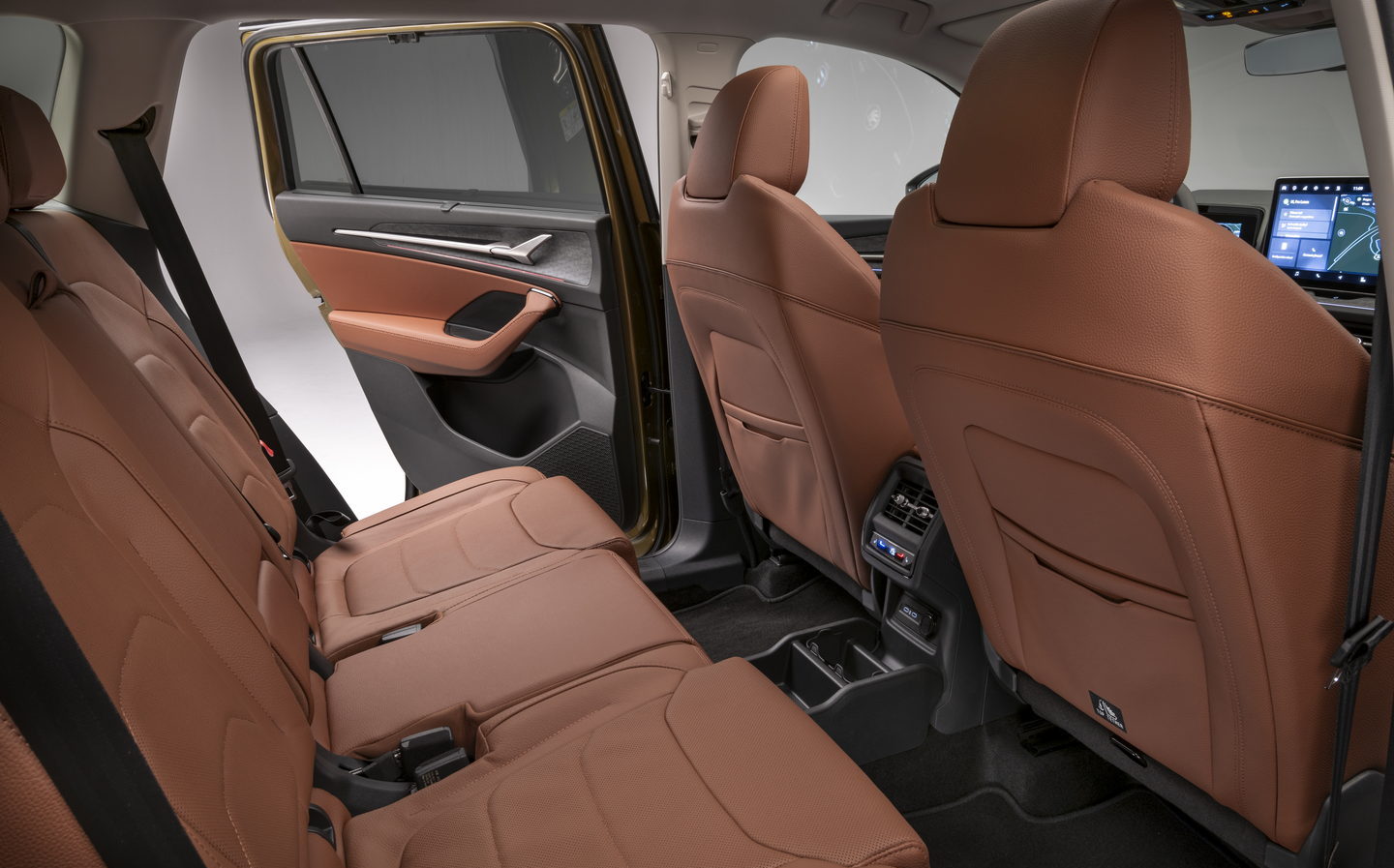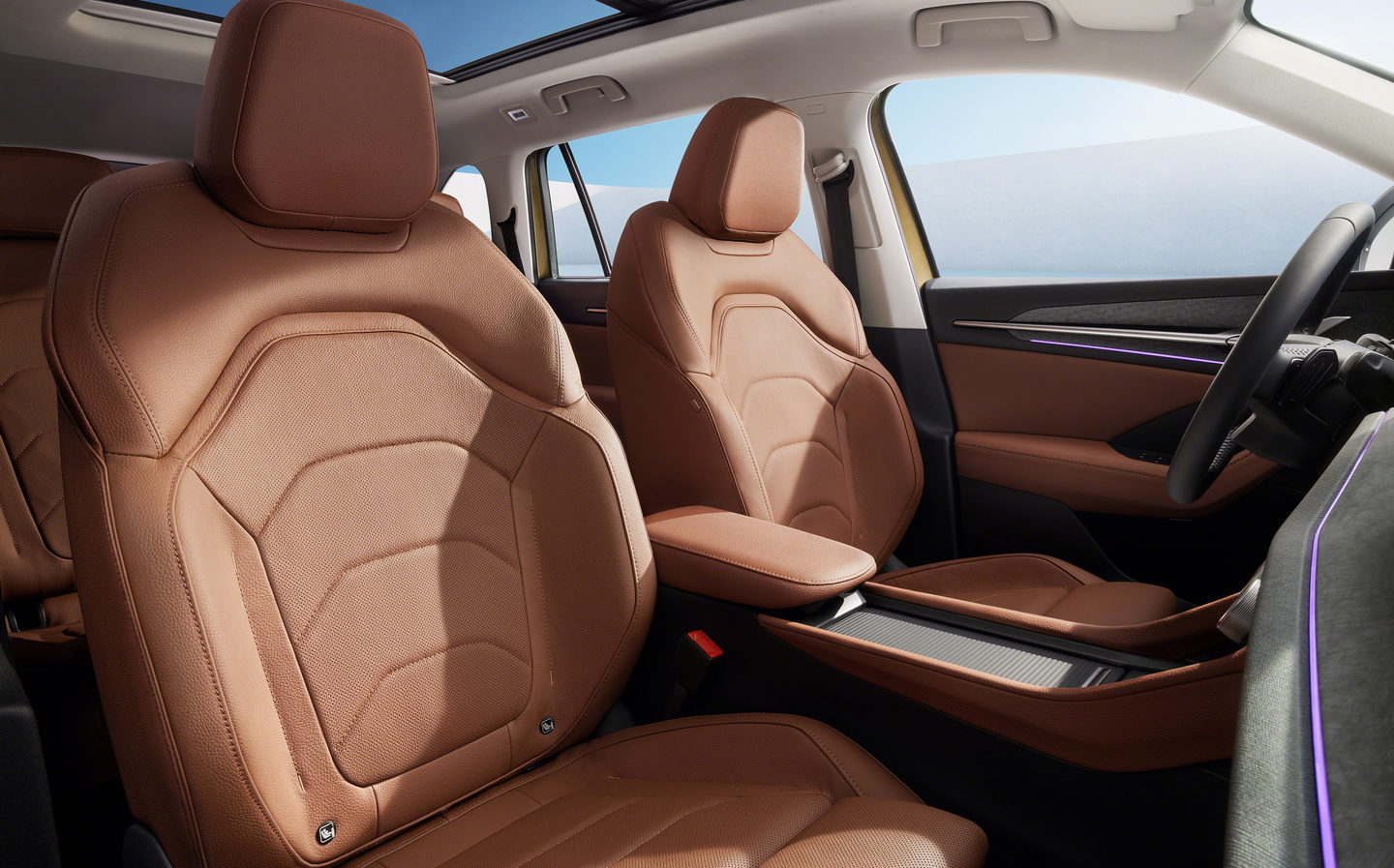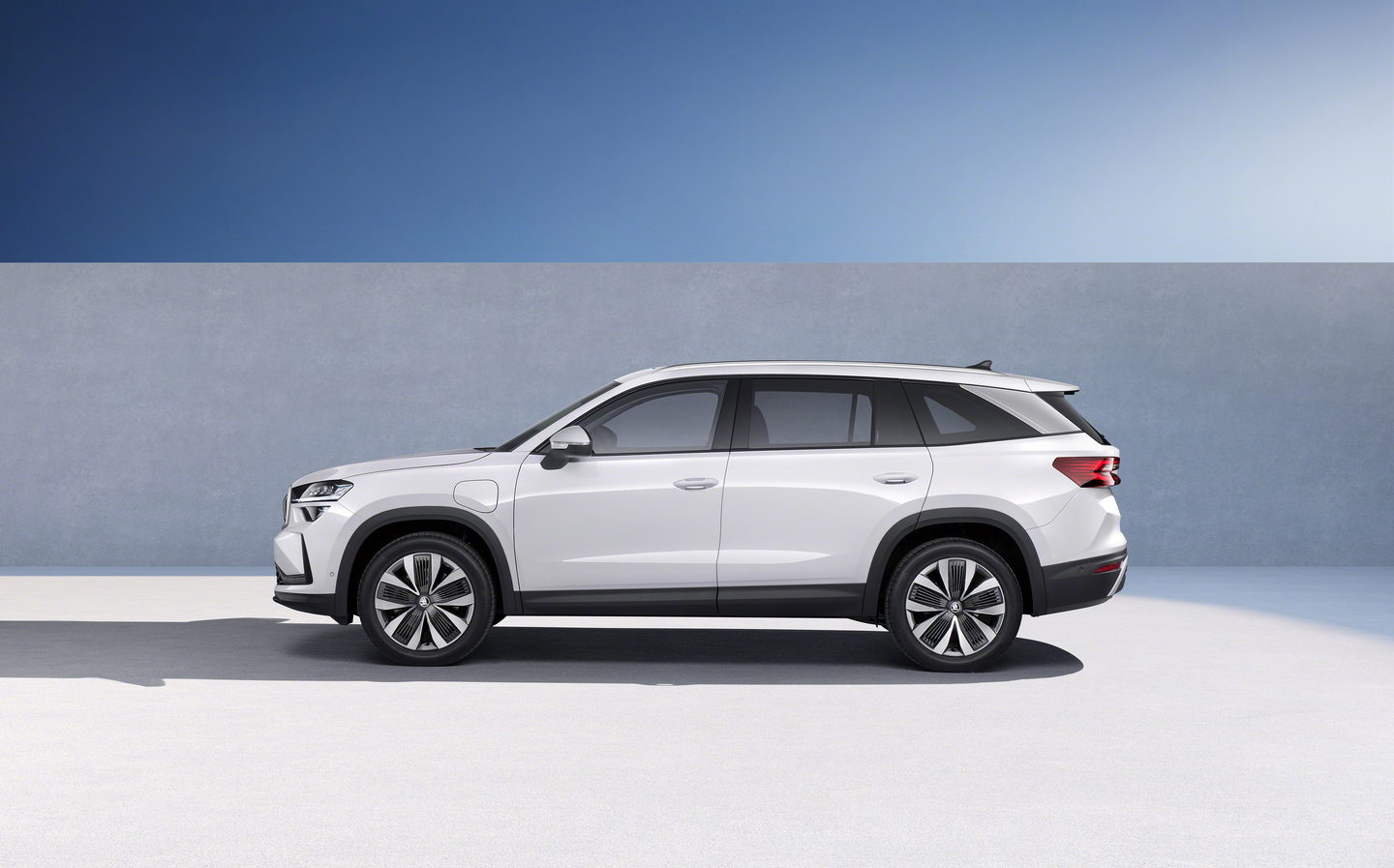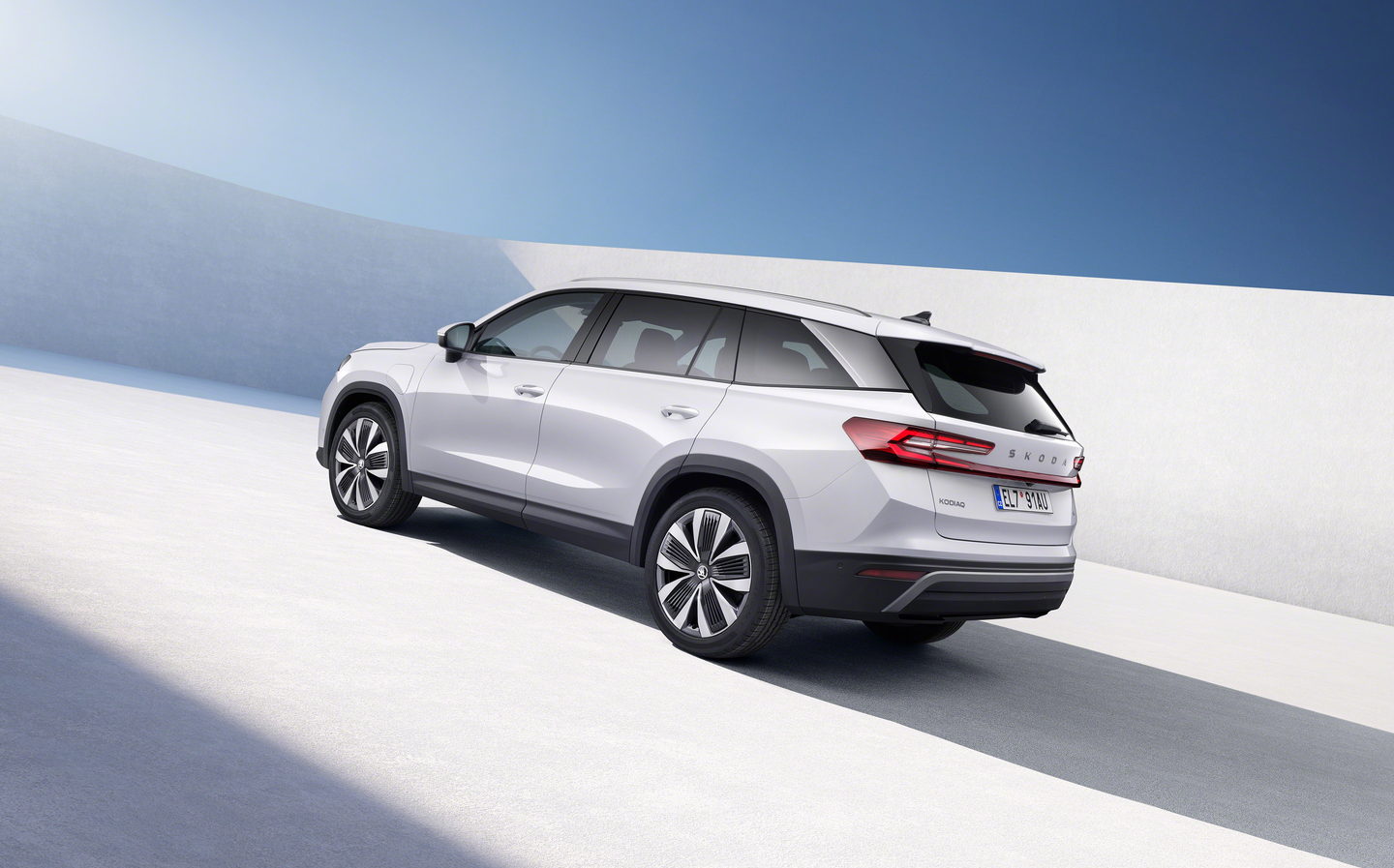All-new Skoda Kodiaq gets plug-in hybrid power with 62+ miles electric range
There’s even ‘air conditioning’ for your smartphone while it charges
Skoda has revealed the all-new, second-generation Kodiaq seven-seat SUV, this time offering its flagship family vehicle with the option of plug-in hybrid power.
The Kodiaq has been a massive success for Skoda, having sold almost 842,000 examples in 60 markets worldwide since 2016.
Despite being a new generation, the 2024 version looks like evolution rather than revolution, but the interior design heralds a new direction for the Czech manufacturer, notably including physical rotary controllers for the climate settings which address a major criticism of modern car interiors — that they are too reliant on touchscreen interfaces.
Bigger on the outside, roomier within
The exterior styling for the Skoda Kodiaq Mk2 very much builds on what came before, but also hides the fact that — as usual with modern cars — the model has grown in size.

It’s now 61mm longer than it was before, measuring 4,758mm from tip to tail, though the wheelbase (the distance between the front and rear wheels) remains unchanged. That’s unusual these days, as car makers often choose to push the axles apart as it can yield extra space inside for passengers. What’s more, the new car is also marginally narrower and lower than the old model.
Skoda nevertheless claims the exterior dimensions are to the benefit of interior space, specifically in the boot department. Always known for its practicality, the new Kodiaq comes with 340 litres of cargo capacity, an increase of 70 litres, even with all seven seats in use.
Fold down the third row of seats, and fully 845 litres of boot become available (+80 litres compared with the outgoing car).
Externally, the new touches include optional LED Matrix headlights on higher grades of the Kodiaq, as well as the potential to have a radiator grille with a light bar connecting the lamp units — the illuminated grille a feature already seen on the Kodiaq’s pure-electric stablemate, the Enyaq.

Beyond that, there are now C-shaped rear light clusters for the Kodiaq, as well as alloy wheels ranging in diameter from 17in to 20in, and a range of body colours including a new metallic called Bronx Gold.
Physical controls making a comeback
Inside, while much of the switchgear has been pared back and a large 13in floating touchscreen controls the main infotainment, the new “Skoda Smart Dials” allow quick access to various onboard functions without having to tap the screen above. Each dial has its own 32mm digital screen, so you can cycle through the related shortcuts.

The interior of the new Kodiaq features much in the way of recycled materials and textiles, with the use of wool in certain upholsteries. And although real leather is used for the cabins of higher specifications of the SUV, the car maker is at least pleased to say that the hide is tanned in an environmentally friendly way using residues from coffee-bean processing.
Aside from the main infotainment screen, Skoda provides a 10in display behind the steering wheel for the instrumentation. For the first time in a Kodiaq, there’s also the option to add a head-up display for the driver.
One neat touch for technophiles: there’s a wireless smartphone charging pad available in the new Kodiaq. Not only can this charge at 15 watts, which is fairly quick, but it can charge two smartphones at once — and its real party trick is that it cools your device as it charges it, to prevent the battery from cooking.
No manual gearbox
One of the big changes in the interior is the placement of the gearshift lever on the steering column. This is possible because all the drivetrains of the new model line are automatic — there is no manual gearbox option available any longer.
A line-up of two petrol engines and two diesels is familiar from before.
Kicking things off on the TSI petrol side of the equation is a 148bhp 1.5-litre engine, although the change here is that this now has 48-volt mild-hybrid technology to save a bit of fuel when it’s on the move.
If that’s not potent enough for you, then a 2-litre TSI with 201bhp is also available.

For the diesels, similar outputs of 148bhp and 190bhp are offered from the venerable 2-litre TDI unit.
Both the 148bhp Kodiaqs are front-wheel drive, while the more powerful TSI and TDI engines come paired to four-wheel drive as standard.
Plug-in hybrid power with 62-plus miles of range
The newcomer to the range is the Kodiaq iV, a plug-in hybrid electric vehicle (PHEV). This employs the 148bhp 1.5-litre TSI petrol engine, along with an electric motor and a sizeable — for a PHEV — 25.7kWh battery pack. The combined maximum power output is quoted as 201bhp but more impressively, Skoda is claiming an electric driving range in excess of 62 miles, which is very useful for daily motoring.
It also has another eye-catching feature — the ability to use DC rapid chargers. Normally, due to their battery size, PHEVs only allow AC charging (and the Skoda has 11kW AC charging capability), but the Kodiaq iV can be charged at up to 50kW on DC if you need to replenish its battery in a hurry.
However, on the downside the PHEV does lose 100 litres of boot space to the regular petrol and diesel models.

Skoda hasn’t announced performance and economy details for this range of engines, nor has a UK range structure and pricing been detailed. For reference, though, the outgoing Kodiaq is priced from £34,760 at present.
There is, though, confirmation of a Sportline model, which gains enhanced exterior looks and a sportier combination of interior finishes — it’s available on all versions of the new car, including the iV PHEV.
Related articles
- If you found the new Skoda Kodiaq interesting, you might want to read our review of a prototype version
- Want to know what the best-selling cars in the UK are?
- Looking for something more compact? Read our extended test report on the Skoda Kamiq
Latest articles
- Omoda 5 prototype review: Bargain family SUV is solid first effort for new Chinese brand
- Dacia Duster 2024 review: Rugged, affordable SUV modernised with electrification and quite the glow up
- Audi A3 Sportback 2024 review: Softly, softly, catchy premium hatchback buyer
- New electric-only Mini Aceman fills gap between Mini Cooper hatch and Countryman SUV
- Tesla driver arrested on homicide charges after killing motorcyclist while using Autopilot
- Porsche Macan 2024 review: Sporty compact SUV goes electric, but is it still the class leader for handling?
- F1 2024 calendar and race reports: What time the next grand prix starts and what happened in the previous rounds
- Aston Martin DBX SUV gets the interior — and touchscreen — it always deserved
- Nissan unveils bold look for updated Qashqai, still made in UK



































